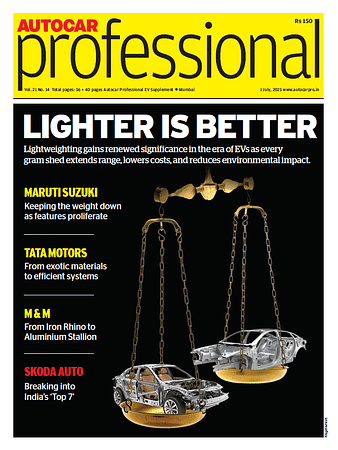Honda Motor Europe expands partnership with SNAM for battery recycling
SNAM is investigating the possibility of using batteries in a ’second life’ for the storage of renewable energy in industrial applications.
Honda Motor Europe is expanding its battery recycling partnership with SNAM (Societe Nouvelle d'Affinage des Metaux) to advance the sustainable usability of its end-of-life traction batteries. The pan-European arrangement will see SNAM collect and recycle batteries from Honda's hybrid and electric vehicles and potentially prepare them for 'second-life' renewable energy storage uses or extract valuable materials for recycling.
Honda and SNAM have worked together since 2013, to ensure the traceability of end-of-life batteries and dispose them off in accordance with European Union’s environmental standards. SNAM will collect Lithium-ion and Nickel Metal Hydride (NiMH) batteries from across Honda's dealer network and authorised treatment facilities (ATF) in 22 countries, before analysing how suitable they are for recycling and processing them.
Tom Gardner, senior vice president at Honda Motor Europe, said: “As demand for Honda’s expanding range of hybrid and electric cars continues to grow so does the requirement to manage batteries in the most environmentally-friendly way possible. Recent market developments may allow us to make use of these batteries in a second life application for powering businesses or by using recent improved recycling techniques to recover useful raw materials which can be used as feedstock into the production of new batteries.”
Safe and low carbon transport is utilised for the collection of used traction batteries. SNAM assesses the battery packs that are valid for inclusion in a new energy storage device. These are then repurposed and made available by SNAM for domestic and industrial applications.
When battery cells are damaged and unsuitable for ‘second life’ applications, materials such as cobalt and lithium can be extracted using hydrometallurgy techniques involving the use of aqueous chemistry. These can be reused in the production of new batteries, colour pigments or as useful additives for mortar. Other commonly used materials including copper, metal and plastics are recycled and offered to the market for use in the production of a variety of applications.
The agreement applies to large ‘traction’ batteries used to power motors in hybrid and electric vehicles, as opposed to smaller batteries used for ignition in petrol or diesel cars. The environmental sound treatment of these batteries at the end of their useful life can result in better management of environmental waste.
RELATED ARTICLES
Forvia Appning and 4screen partner to transform the onboard experience
The partnership aims to enrich the driver and passenger experience by providing personalized and contextual recommendati...
ZF unveils next-gen intelligent chassis sensor
Upgraded version’s integrated accelerometer enables even more precise detection of relative motion in three dimensions a...
First BYD EV rolls off the line at new plant in Brazil
Chinese EV maker takes just 15 months from breaking ground to producing the Dolphin Mini, the first locally manufactured...





 By Autocar Professional Bureau
By Autocar Professional Bureau
 16 Apr 2020
16 Apr 2020
 7656 Views
7656 Views






















